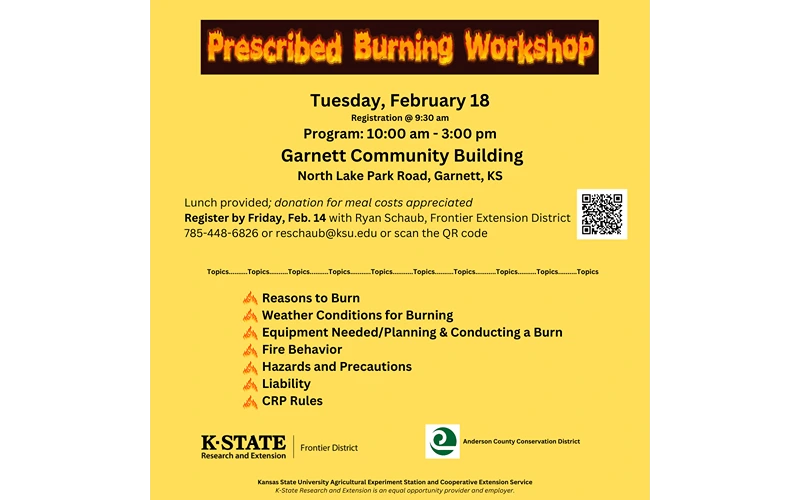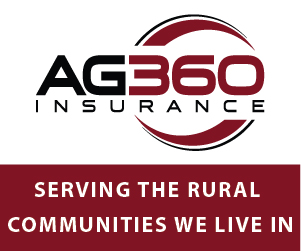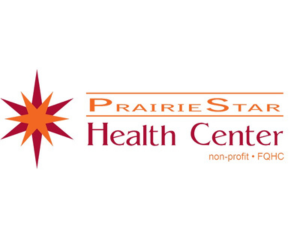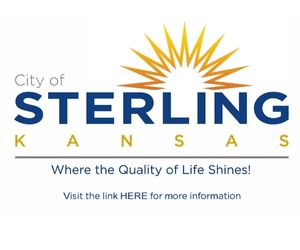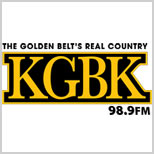Speakers to share guidelines for planning and conducting burns, having the necessary tools
GARNETT, Kan. — The K-State Research and Extension Frontier District and the Anderson County Conservation District will host a school to teach attendees how to plan and safely conduct an effective prescribed burn. The school will be held from 10 a.m. to 3 p.m. on Tuesday, Feb. 18 at the Anderson County Community Building in Garnett. The location can be found at North Lake Road next to the fairgrounds. A chili lunch will be available, with a donation appreciated to help cover expenses. Registration is requested by Friday, Feb. 14 to Ryan Schaub, agriculture agent, at 785-448-6826 or [email protected]
Presenters from multiple organizations are coming together to help teach the school. Topics addressed by these presenters will include reasons to burn, weather conditions for burning, equipment needed, how to plan and safely conduct a burn, fire behavior, hazards and precautions, liability and CRP rules.
Burning of native grasses in Kansas, both natural and man-made, goes back hundreds of years and is responsible for the development of the Great Plains, of which only about 4% remains. Based on early records, these fires varied from only a few acres to thousands of acres that lasted weeks.
On average, Kansas producers have burned roughly 2 million acres each year, but recent trends show that acres have fallen short of that number in the last few years. K-State releases a burn report every week during the burning season, which is the beginning of March to the end of May. This report estimates, according to satellite images, the number of acres that have been burned. In the last few years, K-State has compiled the following estimations:
2024 – 1.37 million acres
2023 – 1.2 million acres
2022 – 1.89 million acres
2021 – 1.88 million acres
K-State research also shows that to keep woody encroachment pushed back, landowners need to burn native grasses at least 60% of the time. According to Schaub, many factors can impact why burning doesn’t occur.
“Maybe the winds were too strong in the spring, maybe the spring weather was too wet, or maybe we fear it will be a dry year or the previous year’s dry weather didn’t produce enough vegetation to burn,” Schaub said. “While we say the burning season is 90 days long, if we get 30 good days to burn, it’s a good burn year!”
In addition to preventing woody plants from invading the prairie grasses, burns conducted under favorable conditions and with proper timing may provide benefits of increased forage quality, improved grazing distribution, increased stocker cattle gains, improved wildlife habitat, faster development of newly seeded grasses and reduced wildfire hazards.
The primary purpose of the school on Feb. 18 is to help landowners and producers safely use fire as a tool to manage and improve their grasslands. If you have questions, call Schaub at 785-448-6826 or send him an email at [email protected].

















